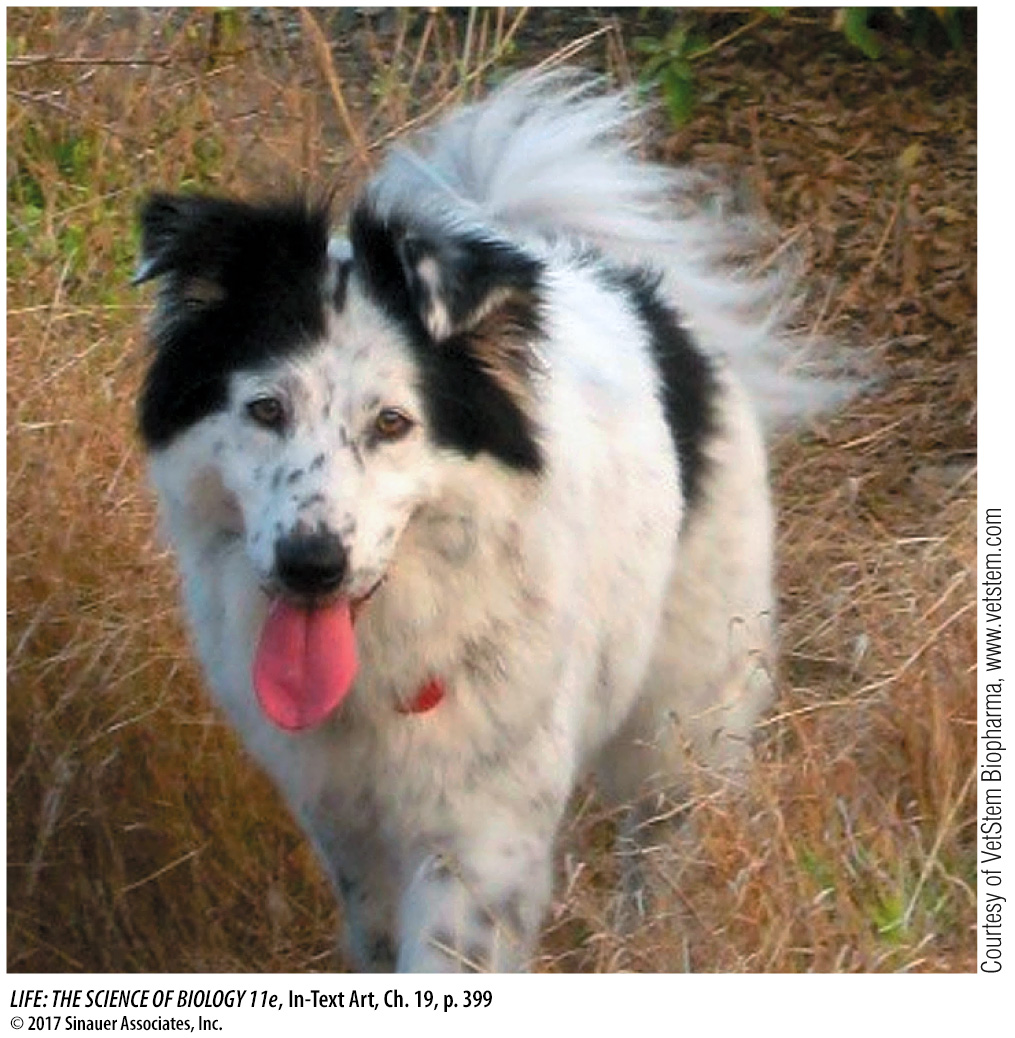Chapter Introduction
19
key concepts
19.1
19.2
19.3
19.4
19.5
Genes, Development,
and Evolution

investigating life
Stem Cell Therapy
Ruby was getting old, and like many in her age group, she developed arthritis in her hips. “Arthritis” means joint inflammation. A breakdown of cartilage between the bones was causing inflammation and pain. Her loved ones could hear the bones in her hips grinding against one another as she tried to walk. The doctor recommended a hip replacement, whereby an artificial joint is inserted. But Karen and Dave did something different for their beloved collie.
A veterinary surgeon removed fat cells from Ruby’s body and isolated mesenchymal stem cells from these tissues. Stem cells are actively dividing, unspecialized cells that have the potential to produce different cell types depending on the signals they receive from the body. Mesenchymal stem cells are able to differentiate into various kinds of connective tissue, including bone, cartilage, blood vessels, tendons, and muscle. Ruby’s stem cells were injected into her hip, and months later she was much better. She was back to her old frisky self, enjoying walks and car rides and even walking up stairs without assistance. Her owners were ecstatic.

Stem cell therapy in humans has been much in the news of late. The basic idea is to inject stem cells into damaged tissues, where they will differentiate and form new, healthy tissues. Many procedures are being tried experimentally, and widespread clinical use is on the horizon. Stem cell treatments have, however, been given to animals for more than a decade. Dogs like Ruby have been returned to their owners with a new lease on life, horses have been returned to racing or to the show ring, and even zoo animals have been treated successfully.
The processes by which an unspecialized stem cell proliferates and forms specialized cells and tissues with distinctive appearances and functions are similar to the developmental processes that occur in the embryo. Much of our knowledge of developmental biology has come from studies on model organisms such as fruit flies, nematodes, frogs, sea urchins, mice, and the small flowering plant Arabidopsis thaliana. Eukaryotes share many similar genes, and the cellular and molecular principles underlying their development also turn out to be similar. Thus discoveries from one organism aid us in understanding other organisms, including ourselves.
What are the potential uses of stem cells?